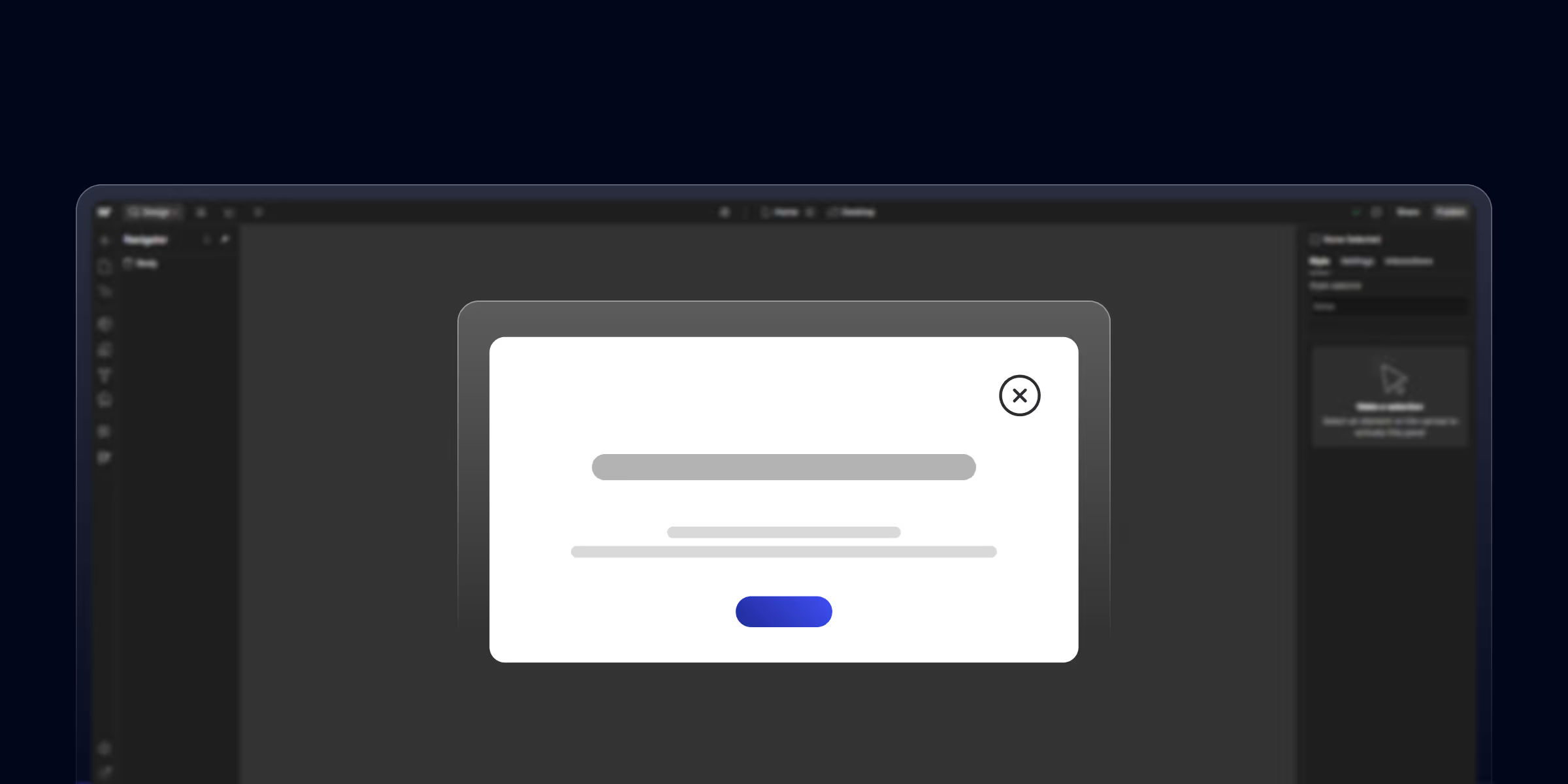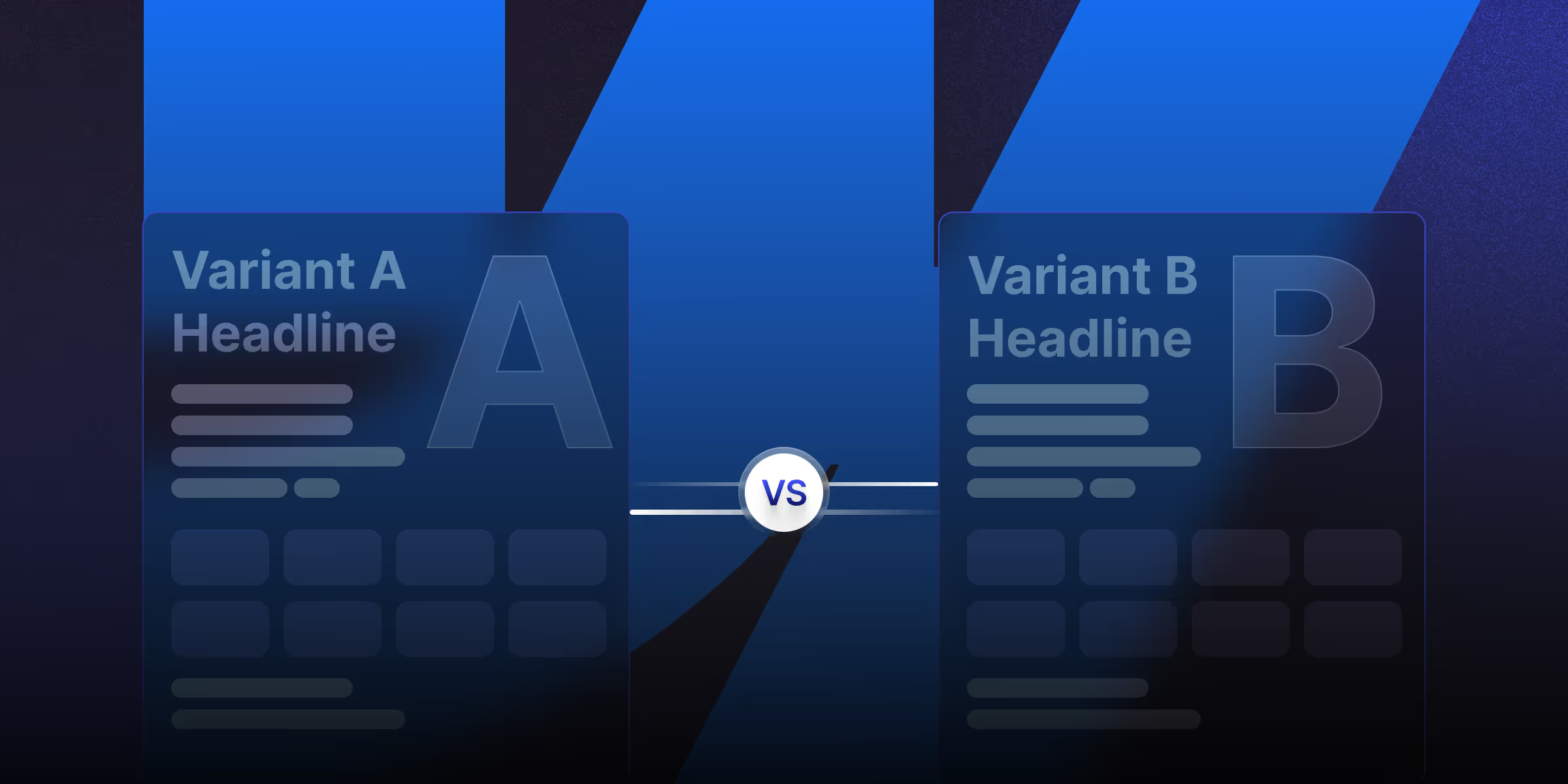How to Create a Popup in Webflow: Step-by-Step Guide 2026
Learn how to create a pop-up in Webflow with this step-by-step guide. Boost engagement with custom popups designed for your Webflow website

Actionable insights to improve SEO, speed, and conversions

Imagine this: You've spent weeks designing your website—beautiful images, perfect layout, everything just right. But when you finally hit “publish,” your excitement fades. The site is painfully slow, and visitors are leaving before they even see your stunning work. What went wrong?
In fact, according to Google, the probability of bounce increases 32% as page load time goes from 1 second to 3 seconds.
The culprit: your images. They’re too large, dragging down your load times. Choosing the wrong image format can have this exact effect, frustrating users and hurting your SEO.
With so many options like JPG, PNG, WEBP, and AVIF, how do you know which is right?
In this post, we’ll help you unpack the best image format for your site, ensuring it looks amazing and loads quickly. Let’s dive in!
JPEG (Joint Photographic Experts Group), commonly known as JPG, is one of the most widely used image formats. It's designed for photos and images with many colors.
The format uses lossy compression, which means some image data is lost during compression, but it also drastically reduces file size.
JPEG Strengths:
JPEG Limitations:
Best JPEG Use Cases:
PNG (Portable Network Graphics) is a format designed for lossless compression, meaning no quality is lost when the image is compressed.
It also supports transparency, making it ideal for web elements like logos and icons.
PNG Strengths:
PNG Limitations:
Best PNG Use Cases:
WEBP is a modern image format developed by Google that provides both lossy and lossless compression.
It offers much better compression than JPG and PNG while maintaining image quality.
Google claims that WEBP can reduce image sizes by up to 34% compared to JPG and 26% compared to PNG.
WebP Advantages:
WebP Limitations:
Best WebP Use Cases:
AVIF (AV1 Image File Format) is the newest of the bunch, providing high compression efficiency with minimal quality loss.
It’s based on the AV1 video codec and offers superior compression to both WEBP and JPG.
AVIF Performance:
AVIF Advantages:
AVIF Limitations:
Best AVIF Use Cases:
SVG (Scalable Vector Graphics) is fundamentally different—vector-based rather than raster.
SVG Advantages:
SVG Limitations:
Best SVG Use Cases:
So what factors and aspects should to consider when choosing the best web image format for your website? Let’s understand that.
Compression is a major factor in how images affect website performance.
When quality and detail matter (for example, in logos or UI elements), a lossless format like PNG or AVIF may be ideal.
However, for images where size is more critical than perfect quality (like blog post illustrations), lossy formats like JPG or WEBP are preferable.
If your site design requires images with transparent backgrounds (like logos or icons), you need to choose a format that supports transparency.
Ensuring that your images load properly across all browsers and devices is crucial for a smooth user experience.
The balance between file size and image quality is a delicate one, especially when optimizing for website speed. Smaller image file sizes help your site load faster, which improves SEO and user experience..
Must Read: Webflow Mobile Optimization Made Easy: Essential Tips & Tricks
In case it’s still not clear, I have shared possible use cases and practical scenarios where each image format can be used.
JPG excels when dealing with photographs, complex color gradients, and large images.
Because of its high compression capabilities, it ensures faster load times for media-heavy websites like blogs, e-commerce sites, or photo galleries.
Use cases: blog post images, large hero images, and social media graphics.
PNG should be your go-to format for images that need sharp edges, high clarity, and transparency.
For example, if you’re designing a website that relies on clean, crisp logos or intricate UI elements, PNG’s lossless compression ensures the best quality.
Use cases: Logos, infographics, screenshots, and icons.
WEBP strikes the best balance between file size and quality. It’s perfect for websites prioritizing speed without compromising on the quality of visuals.
Use cases: Responsive images for blogs, e-commerce product photos, and mobile-optimized content.
If you want the smallest possible file sizes while maintaining high image quality, AVIF is your best bet. It’s ideal for cutting-edge websites or apps aiming to reduce bandwidth without sacrificing visual fidelity. When comparing AVIF vs JPG, AVIF typically delivers better compression and quality at lower file sizes, making it a more modern and efficient choice for web performance.
Use cases: High-resolution images for apps, photography portfolios, and websites with large galleries.
Optimizing images for the web goes beyond choosing the right format. Here are some additional best practices:
Must Read: How Webflow Reduces Bandwidth Consumption for Your Website
Choosing the right image format for your website is critical for balancing performance, quality, and user experience. JPG works well for photos, while PNG is ideal for logos and graphics. WEBP offers excellent compression with modern browser support, and AVIF is the future of high-quality, low-size web images.
Ready to transform your website's image performance and unlock measurable business results? Contact theCSS Agency, specialized Webflow experts who combine deep image optimization knowledge with technical SEO expertise. Our team helps businesses achieve faster loading times, better Core Web Vitals scores, and higher conversions through strategic image optimization and professional implementation that delivers real business impact.
Lossy compression reduces the file size by permanently removing some image data, which can lower image quality. This is commonly used in formats like JPG and WEBP.
Lossless compression, on the other hand, retains all image data, ensuring no quality is lost, and is used in formats like PNG and AVIF. Lossless formats tend to have larger file sizes compared to lossy formats.
For websites prioritizing speed, WEBP and AVIF are the best options. WEBP reduces image sizes by up to 34% compared to JPG, while AVIF can reduce sizes by an additional 50% over WEBP.
Both formats offer high compression with minimal quality loss, improving website load times and user experience.
While support for both formats is growing, WEBP is supported by approximately 94% of browsers, including Chrome, Firefox, and newer versions of Safari.
AVIF has slightly lower support, around 74%, but is rapidly gaining popularity. If browser compatibility is a concern, fallback options (like JPG or PNG) should be provided using the picture tag in HTML.
PNG and WEBP are the best formats for images requiring transparency. PNG is ideal when you need lossless quality, while WEBP offers transparency support with smaller file sizes.
AVIF also supports transparency, but its browser support is less extensive compared to PNG and WEBP.
You can convert images to WEBP or AVIF using tools like Squoosh, Convertio, or CloudConvert for quick online conversion.
For more advanced users, tools like Adobe Photoshop (with plugins), GIMP, and ImageMagick can handle conversions. WordPress users can automate this process with plugins like ShortPixel or Imagify.

Learn how to create a pop-up in Webflow with this step-by-step guide. Boost engagement with custom popups designed for your Webflow website

Unlock the potential of Webflow website builder for beginners. The no-code, drag-and-drop solution is perfect for beginners. Build your dream site effortlessly today!

Learn what is CMS Webflow and master webflow cms development. Find webflow cms features to build scalable, dynamic websites without coding.
Quick Turnaround. No Contracts. Cancel Anytime. Book a 30 minutes consulting call with our expert.